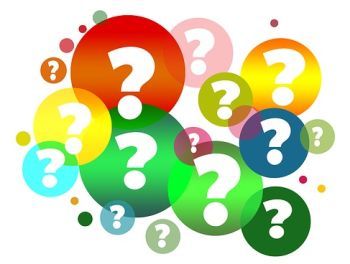You know you’re a news junkie if you’re “just” checking headlines on your phone every morning before even getting out of bed. You set your alarm earlier than you need because your morning routine must include lying in the dark with your phone, jumping back and forth between Twitter and your go-to news sites.
Yeah, you know the so-called “news cycle” is a myth because news never stops happening, and neither does the technology delivering it. Here you are, living proof, lying in bed at 5:15 AM getting “caught up” on everything since your “one last look” before bedtime. The rest of the house is blissfully asleep; the distractions of companions, kids and colleagues will come later. Right now, you’re snuggling with a warm glowing phone.
If you’re a news junkie, that’s what your “me-time” might be looking like.
This article is part of a series on news literacy educating readers how to better judge news reports.
You’re Not a News Junkie, But . . .
Most of us aren’t such extreme news junkies, but we are drowning in headlines. We don’t know how to keep up with what we really need to know. And given a choice of waking up early for news or the rare pleasure of sleeping in, most of us would go for the shut-eye.
There’s a better way.
With an understanding of the two fundamental approaches to journalism, we can use our news time more effectively and become better informed. The two approaches are known as “journalism of verification” and “journalism of assertion.” Both have a legitimate time and place, but you have to recognize them in order to better judge a report.
Join the fight for Israel’s fair coverage in the news
Journalism of Verification
This refers to stories where reporters proactively and independently break news, corroborate their information and demonstrate transparency about their methods. It emphasizes accuracy, context, first-hand sources and original reporting.
In the journalism of verification, sources are eye-witnesses to the event or have first-hand knowledge of the issues they are discussing. Countervailing evidence is weighed, and conclusions are drawn by evidence, not by inference. Stories with layers of complexity provide more details to satisfy skepticism. Reporters add caveats to acknowledge gaps in what’s known that naturally curious news audiences would be wondering.
Adding color to a report not only makes it more readable, it helps build peoples’ trust in the reporter. Descriptive sentences fill out a scene in the mind’s eye of homes reduced to matchsticks by a hurricane, the sound of a shock trauma doctor yelling urgent instructions to emergency room personnel, or the acidic effects of tear gas lingering in the air after a riot.
More critically, color builds a journalist’s credibility because it conveys to the reader that the reporter was there.

Accuracy, context and first-hand sources.
Quality.
Those are the characteristics of the journalism of verification.
Related reading: The 7 News Habits You Need to Develop
Note that getting access, vetting sources, verifying facts and making sense of context requires time — a very precious commodity for both journalists and their audiences — news junkies or not. After all:
- Other papers are pursuing the same story.
- Editors can feel pressured by public demand for information on major stories.
- Reporters are also juggling other assignments.
- Publishers, editors and reporters all want to share in the glory of a scoop.
- Deadlines for print, television and radio are less flexible than online.
In the journalism of verification, being first to report a story isn’t necessarily the goal. But it doesn’t discount the need for speed. You don’t have to be a news junkie to appreciate being alerted ASAP.
Related reading: 3 Tips to Avoid News Burnout
Journalism of Assertion
Assertion journalism refers to reports where news is attributed, not vetted. Bill Kovach and Tom Rosentiel, in their book, Blur: How to Know What’s True in the Age of Information Overload, describe the journalists who primarily use this approach as “operating more as conduits and enablers.” Second-hand information is treated as valid and on the record if it can be attributed to, say, government officials, non-governmental organizations, or other news reports. In a sense, the journalist is just a reactive stenographer.
Much of it has to do with the nature of 24-hour news, where interview formats and time restrictions work against fact-checking. Reporters aren’t always knowledgable enough to know when the interviewee is playing fast and loose with the facts.

And when it comes to breaking news, the earliest reports can’t offer much beyond sketchy details along with qualifying expressions like these:
- “according to”
- “is said to be”
- “per reports”
- “allegedly”
- “may have”
In a breaking news situation like an active shooter, a dramatic court ruling, a celebrity’s death, or the rescue of hikers missing in the wilderness, the immediacy matters more. It’s understood that details will emerge in the coming hours and days. For now, the priority is to simply get the story out.
In moments like that, everyone really is a news junkie.
Related reading: 5 Tips For Sharing News Responsibly On Social Media
It should be noted that some reports can contain elements of both approaches. Verification and assertion aren’t mutually exclusive approaches. It’s perfectly reasonable for a reporter to cite other sources and add some original first-hand info too.
Use With Care
But reporters going down the road of assertion journalism must be careful. The reports they cite must be accurate, balanced and fair, and the conclusions they draw must be borne out by the original story. It’s always preferable if you can take the time to check out the original story and judge it yourself.
Does the original report for example, distort facts, lack context, is imbalanced in some way, or lacks transparency?
If the original story was based on anonymous sources, the secondary journalist must take into account issues such as:
- The significance of the information.
- How transparent the original report in explaining the credibility of the source, his motives, and reasons for anonymity.
- Attempts at further independent corroboration.
If a mistake in the original story requires a correction, the secondary journalist will need to do likewise. Unfortunately, correcting the record may take time, and most people never see the correction
And one of the most-tried ways of getting propaganda into the mainstream news is publish a “story” on a web site that looks and feels authoritative, seed it around social media and hope it gets picked up by a careless reporter working for a respectable paper.
So whether or not you’re a news junkie, be smart. Find the original report and judge it for yourself.
Related reading: 7 Tips to Teach Your Kids News Literacy
 News Junkie or Connoisseur?
News Junkie or Connoisseur?
It isn’t difficult to identify whether an individual story is based on verification or assertion journalism. Here are a few questions to ask yourself:
- Who exactly is the source of information here? A key player with first-hand knowledge? A spokesperson with second-hand knowledge? A respectable newspaper?
- Is the original article accurate, fair, balanced and well-sourced?
- Did the second article add any new information not in the original story?
- If the story includes anonymous sources, what exactly is disclosed about who they are, how they are in a position to speak authoritatively, and why they are staying anonymous?
By identifying whether a report is based on on the journalism of verification or assertion, we can more quickly gauge whether it is worth our time. Over time, we will be better able to spot reliable reporters worth our time. We can be better informed. Rather than settle for being disdained news junkies, we can all become proud news connoisseurs.
Liked this article? Follow HonestReporting on Twitter, Facebook, Instagram and TikTok to see even more posts and videos debunking news bias and smears, as well as other content explaining what’s really going on in Israel and the region.
Featured image: via Bosland Corp.; lady CC BY-NC Thom Sanders; TV CC0 Pixabay; question marks CC0 Pixabay; anonymous person CC0 pxhere;
Before you comment on this article, please note our Comments Policy. Any comments deemed to be in breach of the policy will be removed at the editor’s discretion.



